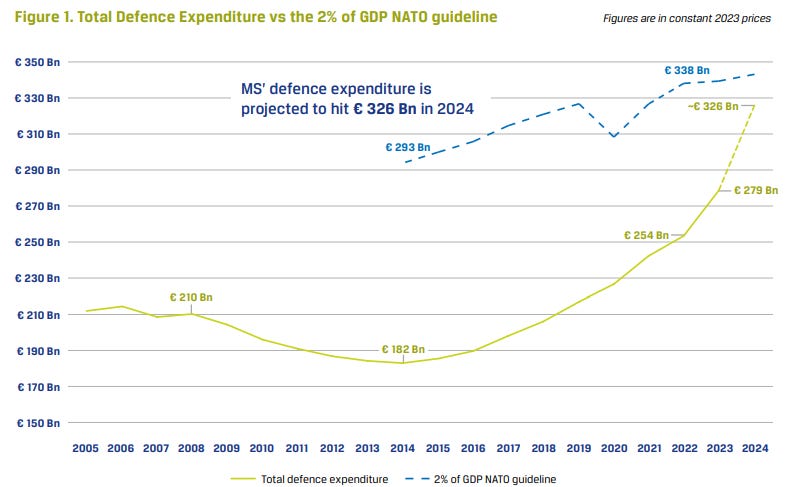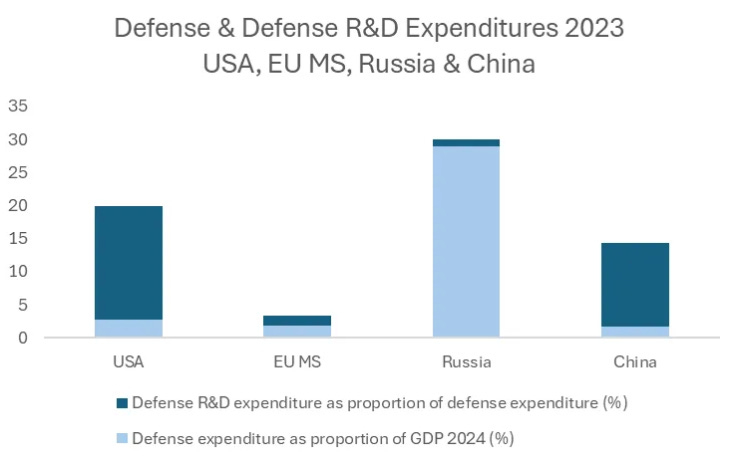- Sovereignty with Tatjana de Kerros
- Posts
- New European Defence Expenditure: Rising Budgets, Global Dependencies and a Long Road to Sovereignty
New European Defence Expenditure: Rising Budgets, Global Dependencies and a Long Road to Sovereignty
A quick analysis of the European Defense Agency's 2023-24 Expenditure Report, uncovering the challenges of fragmented collaboration and innovation in Europe's elusive quest for defense sovereignty

Rising Defense Budgets Across Europe
The year 2023 marked the largest increase in defense expenditure among European Union (EU) Member States, totaling €279 billion, or 1.6% of GDP, spurred by the ongoing conflict in Ukraine. The European Defense Agency (EDA) forecasts further increases, projecting spending to reach 1.9% of GDP in 2024, aligning closer to NATO guidelines championed by the United States.
Defense investments reached a historic high of €72 billion (26% of total defense expenditure), with a significant portion (€61 billion) directed toward defense equipment. However, a large percentage of this equipment has been procured from non-European nations, such as the U.S. and China, highlighting Europe's reliance on foreign manufacturing and technology.

European Defense Agency (2024)
Challenges in R&D and Innovation
Despite a doubling of defense R&D funding since 2016, reaching €11 billion in 2023, the benefits have predominantly accrued to non-EU trade partners. This reliance reflects the limited capacity of Europe's industrial defense complex.
The State of Defense Research and Technology
Within R&D, the subset of Defense Research & Technology (R&T) experienced growth but still accounted for only 1.4% of total defense expenditure, below the planned 2% target. This suggests a lack of robust European projects in applied science and technology demonstrations. By comparison, the U.S. Department of Defense (DoD) allocated a much higher 17.22% of its defense budget to R&D in 2023, as has China, whilst it is an inverse relationship for Europe when comparing defense R&D expenditure as a proportion of total defense spending.

Tatjana de Kerros (2024) Sources: DoD, National Center for Science & Engineering Statistics, EDA, Eurostat, Rosstat, SIPRI
Regional Variations and Fragmented Spending
Defense spending increased by over 10% in 11 EU Member States, including the UK, Finland, and Poland. Research by Bocconi University identified a correlation between increased defense budgets and proximity to Russia, as well as among states with historically low defense expenditure.